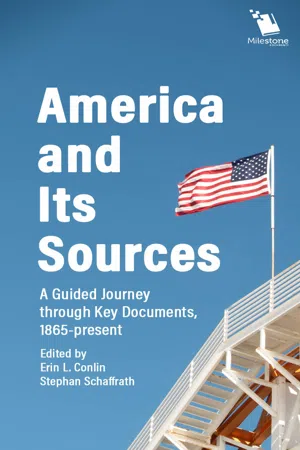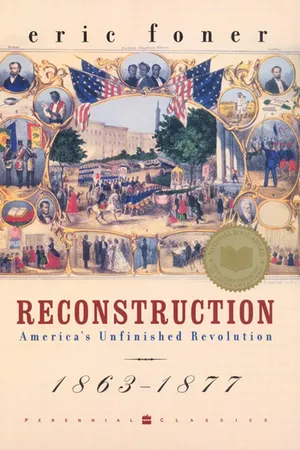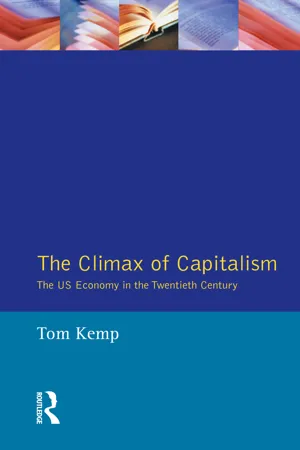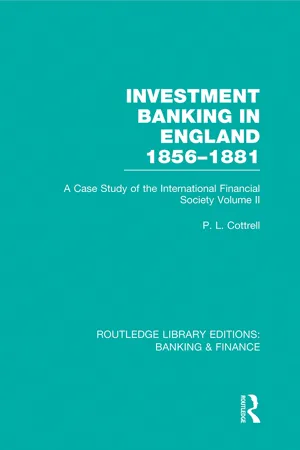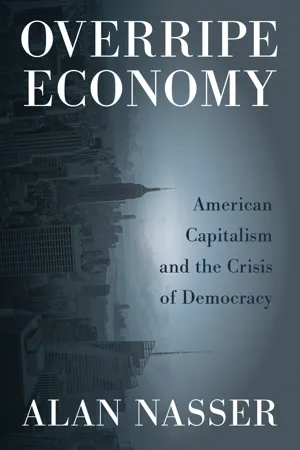History
Depression of the 1890s
The Depression of the 1890s was a severe economic downturn that affected the United States and other industrialized nations. It was characterized by widespread unemployment, bank failures, and a sharp decline in agricultural and industrial production. The depression led to social unrest and political movements advocating for economic reforms, and it ultimately set the stage for the progressive era in American history.
Written by Perlego with AI-assistance
Related key terms
10 Key excerpts on "Depression of the 1890s"
- eBook - ePub
- Philip R. Yannella(Author)
- 2010(Publication Date)
- Wiley-Blackwell(Publisher)
1 The Depression and the Early 1940s The ContextFrom the Civil War through the 1920s, there was a great deal of poverty in the United States. Decades of protest, political agitation, and unionization efforts were not successful in altering basic economic conditions and the near-revolutionary agitation of the years between 1916 and 1919 ended in total loss for reformers, unionists, socialists, and other dissidents. The prosperity of the 1920s helped some people in some regions and economic sectors of the country. But all ships were not raised on the tide of prosperity; some economic sectors, including the large agricultural sector, continued to suffer.The long-term problems of farmers were exacerbated during the 1930s by severe drops in the price of farm products and drops in consumer demand. Farming became an even more tenuous occupation than it had been, farm profits thinner, farm families less stable. Parts of the country were also struck by a multiyear drought. The hardest hit was the so-called Dust Bowl, a large area that included western Kansas, the southern edge of Nebraska, southeastern Colorado, the northwestern corner of Oklahoma, northwestern Texas, and the northeastern edge of New Mexico. Wind storms across the Dust Bowl carried away topsoil made vulnerable to erosion by poor farming practices, crops failed year after year, great numbers of farms went into foreclosure, and local economies were devastated.Popular representations of 1930s farmland conditions sometimes make it seem that all except very wealthy farmers failed and left the land. In actuality, according to the occupational summaries of the 1930 and 1940 Censuses, the numbers of farmers and tenant farmers grew during the decade, from 5.0 million in 1930 to 5.1 million in 1940. The number of farm laborers, people who worked for wages on farms, however, declined from 4.4 to 3.0 million. - eBook - ePub
- Eric Foner(Author)
- 2010(Publication Date)
- HarperCollins e-books(Publisher)
Many mine and factory workers resisted wage cuts in militant, violent strikes. 1874 witnessed bitter labor disputes on the railroads and in Midwestern mines, and the following year 15,000 textile workers stayed out for two months in unsuccessful opposition to wage reductions. Also in 1875, the “long strike” in Pennsylvania’s anthracite coalfields ended in defeat for the powerful Workingmen’s Be-nevolent Association and produced the celebrated Molly Maguire trials, which culminated in the hanging of twenty militant miners. To one Boston newspaper, these strikes marked “a transition period” in the nation’s history. The depression, it seemed, had brought European-style class conflict to America and, as a Pennsylvania official commented, “fearfully” deepened “the antagonism between rich and poor.For farmers, too, the depression brought economic dislocation and galvanized new forms of protest. Farm population and output continued to increase throughout the decade, but as agricultural prices and land values tumbled, postwar prosperity gave way to hard times. Many responded by calling for increased railroad regulation and currency inflation, to raise agricultural prices and enable indebted farmers to meet their mortgage payments.Rudely disrupting visions of social harmony, the depression of the 1870s marked a turning point in the North’s ideological development. The widespread tension between labor and capital gave rise to a public discourse fractured along class lines. In small industrial centers throughout the North, striking workers found allies among local officials and small-town businessmen, many of whom shared labor’s resentment against the disruptive impact of corporations controlled from outside the community. But in the larger cities, and among the leaders of both parties, older notions of equal rights and the dignity of labor gave way before a sense of irreducible barriers between the classes and the need to defend property, “political economy,” and the economic status quo.As the depression intensified, the Northern urban middle and upper classes embraced the critique of labor and farmers’ movements and of the activist democratic state pioneered by Liberal reformers. Castigating labor leaders as “enemies of society” who believed “the world owes them a living,” the urban press blamed poverty on laziness and extravagance and insisted that the laws of political economy dictated only one way out of the depression: “Things must regulate themselves.” These beliefs quickly broadened to include a critique of both nongovernmental charity and workers’ own collective efforts. A special report on “pauperism” for the American Social Science Association not only rejected public assistance outside workhouses, but blamed “indiscriminate” and “over-generous” private relief for exacerbating labor unrest by encouraging the unemployed to turn down jobs paying reduced wages. Indeed, many urban newspapers viewed the depression as “not an unmixed evil,” since it promised to reduce wages, discipline labor, and curb the power of unions. - eBook - ePub
Remaking the Modern World 1900 - 2015
Global Connections and Comparisons
- C. A. Bayly(Author)
- 2018(Publication Date)
- Wiley-Blackwell(Publisher)
3Outside the European colonies, the Depression also drove forward government intervention as politicians sought to placate an angry workforce. Some of this spending went into the countryside, as in the case of the Tennessee Valley Project in the United States. But much of it went into big industrial towns, further increasing their attraction to the unemployed smallholder or rural labourer. Finally, the very considerable political, intellectual and even artistic changes that were spurred on by the Depression were of significance. In the field of economic theory, at least until the 1970s, most governments were persuaded by the theories of Keynes and his supporters, who pointed to the self-defeating nature of government cuts and “austerity” while the economy itself was in dire trouble.4 When the Great Recession of 2008 unfolded, these debates were reignited.The Origin and Spread of the Depression
A number of circumstances, pondered over in great detail by economic historians, came together to provide the background for the collapse of the New York stock market in August 1929.5 The United States was unsparing in its demands for the repayment of war loans to European and other governments after the mid-1920s. France, too, pressed Germany for war reparations. Both these conditions brought about significant deflation just at the point when the world economy remained highly volatile. This coincided with conditions beyond Europe and America, which contributed to yet greater instability. For instance, landlords and peasants, attempting to recoup wartime and immediate post-war losses, over-produced agricultural crops, something that was made easier by contemporary developments in technology. Equally important was the wrong move taken by financial authorities in London and New York in reinstituting the gold standard, which had supposedly provided stability to the international financial system before 1914. This proved a disaster because it locked the currencies of Western countries and their colonies into an unsustainable fixed global exchange rate which ultimately collapsed, leading to a renewed crisis of confidence.6 - eBook - ePub
America and Its Sources
A Guided Journey through Key Documents, 1865-present
- Erin L. Conlin, Stephan Schaffrath(Authors)
- 2019(Publication Date)
- Schlager Group Inc.(Publisher)
Throughout history, the American economy has had periods of growth followed by periods of recession and depression. That is part of a normal economic cycle. What made the depression of the 1930s so “great,” however, was the scope and scale of the disaster. Roughly a quarter of the nation was unemployed during the 1930s. (In a healthy economy, unemployment rates are typically about 4 to 5 percent.) Millions of Americans became migrants—people with no permanent home—because they had lost their land or jobs working in agriculture. No one knew how to end the Depression, because to date, the nation had never suffered such a severe one. Franklin Delano Roosevelt, elected president in 1932, promised to lead the country in a new direction.Note: When you’re referring explicitly to the Great Depression, “Depression” is capitalized. When speaking generally about an economic depression, it is lowercase.Unit Questions 1. Why is the Great Depression seen as a watershed moment in American history? To answer this question, think about the many ways that it affected all sorts of people across the country.2. How did different groups of people experience the Depression differently? Create a matrix or diagram with a list of different types of people (on the left) and the ways in which these people experienced the Depression (on the right).3. How and why did the role of the U.S. government change in society from the 1920s through the 1930s? Here it would be helpful to make two lists of government policies: one for policies that contributed to the Depression and another one for policies that were designed to lift the country out of the Depression.Passage contains an image
6.2 Herbert Hoover: “Rugged Individualism” Campaign Speech (1928)Historical ContextFollowing World War I, the United States pulled back from international affairs and focused on domestic growth. The Republican Party led efforts to roll back Progressive-era legislation to stimulate business growth. Although Republicans did not call it laissez faire, - eBook - ePub
- Eric Foner(Author)
- 2011(Publication Date)
- Harper(Publisher)
The Politics of DepressionThe Depression and Its Consequences
T HE intoxicating economic expansion of the Age of Capital came to a wrenching halt in 1873. In September, Jay Cooke and Company, a pillar of the nation’s banking establishment, collapsed after being unable to market millions of dollars in bonds of the Northern Pacific Railroad. Within days, a financial panic engulfed the credit system. Banks and brokerage houses failed, the stock market temporarily suspended operation, and factories began laying off workers. Throughout the western world, the Panic of 1873 ushered in what until the 1930s was known as the Great Depression, a downturn that lasted, with intermittent periods of recovery, nearly to the end of the century. This first great crisis of industrial capitalism permanently altered the nature of economic enterprise, and had profound political and ideological consequences. For by shattering the mid-Victorian era’s faith in the inevitability of progress and exacerbating class conflict, the depression propelled the “labor question” to the forefront of social thought, undermined assumptions at the core of the free labor ideology, and reshaped the nation’s political agenda and the balance of power between the parties.1In a way, it was fitting that the Northern Pacific’s financial problems triggered the Panic, for if the railroad boom nourished postwar growth, the network’s overexpansion, paid for by an outpouring of speculative credit, created a financial house of cards whose eventual collapse was only a matter of time. By 1876, over half the nation’s railroads had defaulted on their bonds and were in the hands of receivers. And as track construction halted, the industries that had prospered from the railroad’s growth suffered disastrous reverses. By the end of 1874, nearly half the nation’s iron furnaces had suspended operation. Not until 1878, a year that saw more than 10,000 businesses fail, did the depression reach bottom. Growth resumed early the following year, but the sixty-five months following the Panic of 1873 remains the longest perod of uninterrupted economic contraction in American history.2 - eBook - ePub
The Climax of Capitalism
The U.S. Economy in the Twentieth Century
- Tom Kemp(Author)
- 2014(Publication Date)
- Routledge(Publisher)
A decade of crisis: 1929—1939By its unexpectedness, its scale and its duration, the Great Depression of the 1930s had a traumatic effect on all sections of American society. Coming as a sequel to several years of prosperity which had led business spokesmen and leading economists to forecast a new era of crisis-proof expansion, it proved to be the longest and deepest in history.For three and a half years following the Wall Street crash, the economy continued on a downward plunge, ruining millions of small businessmen and farmers, condemning one quarter of the labour force to unemployment and almost destroying the banking system. In what Americans proudly assumed was the richest country in the world, the living standards of many unemployed workers and poor soil farmers fell to 'third world' levels. The blow to the 'American dream' was so sudden and severe that the reaction of many was one of disbelief and passivity rather than of anger. There was no sharp turn to the left by a segmented working class, no mass middle-class support for a far-right saviour - though both tendencies were later to appear.The explanation of the Great Depression poses many problems for economists and it is not surprising that no consensus should exist. Many were, and still are, reluctant to attribute it to some organic weakness of capitalism, looking rather to extraneous circumstances, mistakes in government policy or wrong decisions by the monetary authorities.The Greatest Depression
Most accounts of the Depression begin with the Wall Street crash, so that the beginning of the Depression can be exactly dated to 24 October 1929. It is unlikely that the crash would have been followed by such devastating consequences had there not been about this time the coming together of various factors making for a slump. The crash, while particularly severe, was a financial panic of a classic type familiar in the financial history of European countries as well as the United States. Its form was a rush into liquidity by those holding shares, and later, other types of paper - bonds, securities, bills of exchange bringing prices crashing down. In the previous months share prices had been rising at an extraordinary rate, the result of excessive speculation in which large numbers of people, including many newcomers to stock-market transactions, had been participating. In such speculative manias, a time comes when confidence in the continued upward movement of stock-market prices begins to break. Some feel the urge to sell before the fall begins, or become overcommitted and have to sell to settle payments elsewhere. Once selling generates a fall there is a good chance that the movement will spread until it becomes an avalanche. Weaknesses and frauds are exposed, and it becomes virtually impossible to reverse the trend. - eBook - ePub
War and Progress
Britain 1914-1945
- Peter Dewey(Author)
- 2014(Publication Date)
- Routledge(Publisher)
CHAPTER 11 __________ __________________________ ______________ SLUMP AND DEPRESSION, 1929–31 CAUSES OF THE WORLD DEPRESSIONT he depression which began in 1929, and continued to deepen in most countries until 1932, was the most severe international depression which had ever been recorded. Apart from its severity, it was notable for two features; it affected both industrial and primary producers, and it was rapidly transmitted around the world by the mechanisms of international trade and payments. By 1932, there were about 30 million people recorded as unemployed, chiefly in the industrial economies. In the agricultural regions of the world, the depression was felt more in the shape of falling incomes, in both domestic and export markets, and unemployment either went unrecorded or took the form of higher underemployment. For all economies exposed to it, the depression reduced national incomes. In the process, prices also dropped precipitously. The USA, which was the industrial economy most severely affected, saw its GDP fall (in real terms) between 1929 and 1932 by 28 per cent. For the industrial economies as a whole, average GDP in those years fell by 18 per cent in real terms.1Superimposed on the depression, and mainly brought into play by it, were a series of financial crises. Some were internal, such as the waves of bank failures in central Europe and the USA. Some were external, such as the defaulting on interest payments in south America, or the German banking crisis which followed the flow back to the USA of the investment funds exported since 1924. Finally, there were exchange rate crises and devaluations, of which those of the UK in 1931 were the most notable.The causes of the depression are still debated. While space forbids extensive discussion here, it can be said that the main elements were the weak position of primary producers, in both agrarian and industrial economies; the ending of the industrial boom in the USA; destabilising capital flows; the decline of world trade; the decline of investment.2 - eBook - ePub
- Phillip Cottrell(Author)
- 2019(Publication Date)
- Routledge(Publisher)
The Depression, 1866 to 1869The financial depression after the crisis of 1866 was both long and severe for although there are indications that the capital market was beginning to revive in 1868, a major upswing in economic activity did not develop until the last quarter of 1869. Foreign trade, the continuing engine of economic growth, began to recover during the closing months of 1868. However, the revival of financial and business activity was hesitant being disturbed by the Franco-Prussian war and affected by the course of the American business cycle. In England the slow unwinding of the speculative and heady boom of the first half of the 1860s was a continuing demper on business psychology during the last four years of the decade. The Economist remarked in December 1866:"The state of the money market indicates that much money is lying idle which the owners do not know what to do with. Confidence is said to be shaken and in many things is shaken. But as soon as any investment is proffered in which the public have faith, be it a Russian loan, or a Queensland loan, or a Victoria loan - the sums subscribed commonly exceed the sum asked for. There is evidently a mass of money craving for a safe and not extreme income, if only it knew where to find it."1These remarks were echoed and amplified by The Bankers' Magazine seven months later:"One of the most remarkable evidences of the intensity of the panic of 1866 is the extraordinary and long-ending depression which it has left behind it ... But the strange, the discouraging thing is, that the entire market for every kind of investment is similarly affected. For the first time in half a century the monetary world seemed inclined to go back to the safe simplicity of three per cents, or the moderate interest to be made by lending money on mortgage, or laying it out on freeholds or long leases."2 - eBook - ePub
Overripe Economy
American Capitalism and the Crisis of Democracy
- Alan Nasser(Author)
- 2018(Publication Date)
- Pluto Press(Publisher)
4The 1930s and the Great Depression
The economic dynamics of 1920s U.S. capitalism serve as an exemplar of mature industrial capitalism. Not only do they account for the Great Depression, but they do so exhaustively. That is to say, the factors precipitating the Great Depression in America were entirely internal to the United States. Nothing comparable can be said of the origins of the Depression in other developed capitalist countries. Great Britain’s internal economic conditions were dependent on her foreign trade, which helped soften the impact; not so the United States. The nation had a sizeable export surplus that was maintained throughout the Great Depression. The U.S. had been, since the First World War, a net international creditor, ran a continuous favorable trade balance throughout the 1920s and, thanks to war and continuing political uncertainty after it in Europe, held about 28 percent of the world’s stock of gold. No other capitalist country enjoyed this complete relative absence of external sources of economic instability (Arndt, 1972:18).An accurate account of the Depression will both shape our understanding of the New Deal as a political intervention and reveal the severe limitations of any form of capitalist social democracy. The Great Depression, like the current one, was no mere business-cyclical downturn. Not only did the business cycle operate during it, it was, in fact, made up of three distinct phases, two depressions sandwiching an expansion. The first contraction, the longest and most severe, ran from August 1929 to March 1933, a total of 43 months. The second began in May 1937 and ended in June 1938, a total of 13 months. The economic upturn between them, lasting 49 months, was based on the New Deal’s greatest intervention. It is important to note that while that expansion was one of the longest in U.S. history, neither of the contractions were the longest (the longest contraction having been from October 1873 to March 1879, lasting 65 months). - eBook - ePub
American Education
A History
- Wayne J. Urban, Jennings L. Wagoner, Jr., Milton Gaither(Authors)
- 2019(Publication Date)
- Routledge(Publisher)
9 The Effects of Depression and War on American Education 1930–1946Overview
The period of the Great Depression and its immediate aftermath, the World War II years, present a special challenge to those who would make sense of its educational developments. In discussing these years, the enormous economic cataclysm that engulfed all of American society, including its schools, is examined first. Next, the massive social dislocations that accompanied the depression, including some substantial changes in the schools, are considered. In spite of these changes, schools during and immediately after the Great Depression resembled their predecessor institutions of the 1920s as much as they differed from them. The deterioration in economic support for the schools that took place during the depression, however, threatened their ability to prosper in the following decades.School Continuity during the Depression
As the end of the last chapter suggests, American public schools and those who worked in them were remarkably inward looking during the 1920s. The widespread appearance of prosperity, although an illusion for many, inhibited school people and others from examining the relationships between their institutions and the larger society. Also, as in most other segments of American society, school people hardly noticed the stock market crash of October 1929, since its effects did not immediately reach the schools and those who worked in them. Thus, although historians date the Great Depression to late 1929, financial support for public schools in all but a few cases remained stable until well into the 1930s.Political and ideological circumstances, especially at the national level, also delayed any quick responses to the depression by school boards and school administrators. For example, Herbert Hoover, elected to the presidency in 1928, would stay in office for almost three years following the stock market crash. A businessman and engineering expert, Hoover symbolized the commitment to business efficiency that characterized so many school administrators of that era. Thus, it was unlikely that schoolmen would easily discard their belief in efficiency, even as the depression deepened and public opinion turned against business. Instead, like the president, school leaders believed that the economic prosperity of the 1920s would soon reappear. Thus, they continued to support the ideology of educational efficiency that had dominated their vision since early in the twentieth century.1
Learn about this page
Index pages curate the most relevant extracts from our library of academic textbooks. They’ve been created using an in-house natural language model (NLM), each adding context and meaning to key research topics.



